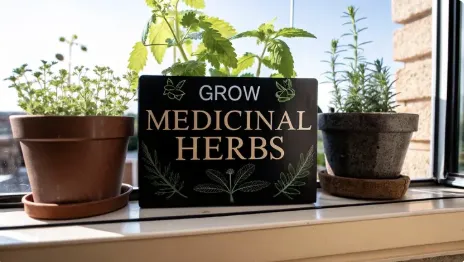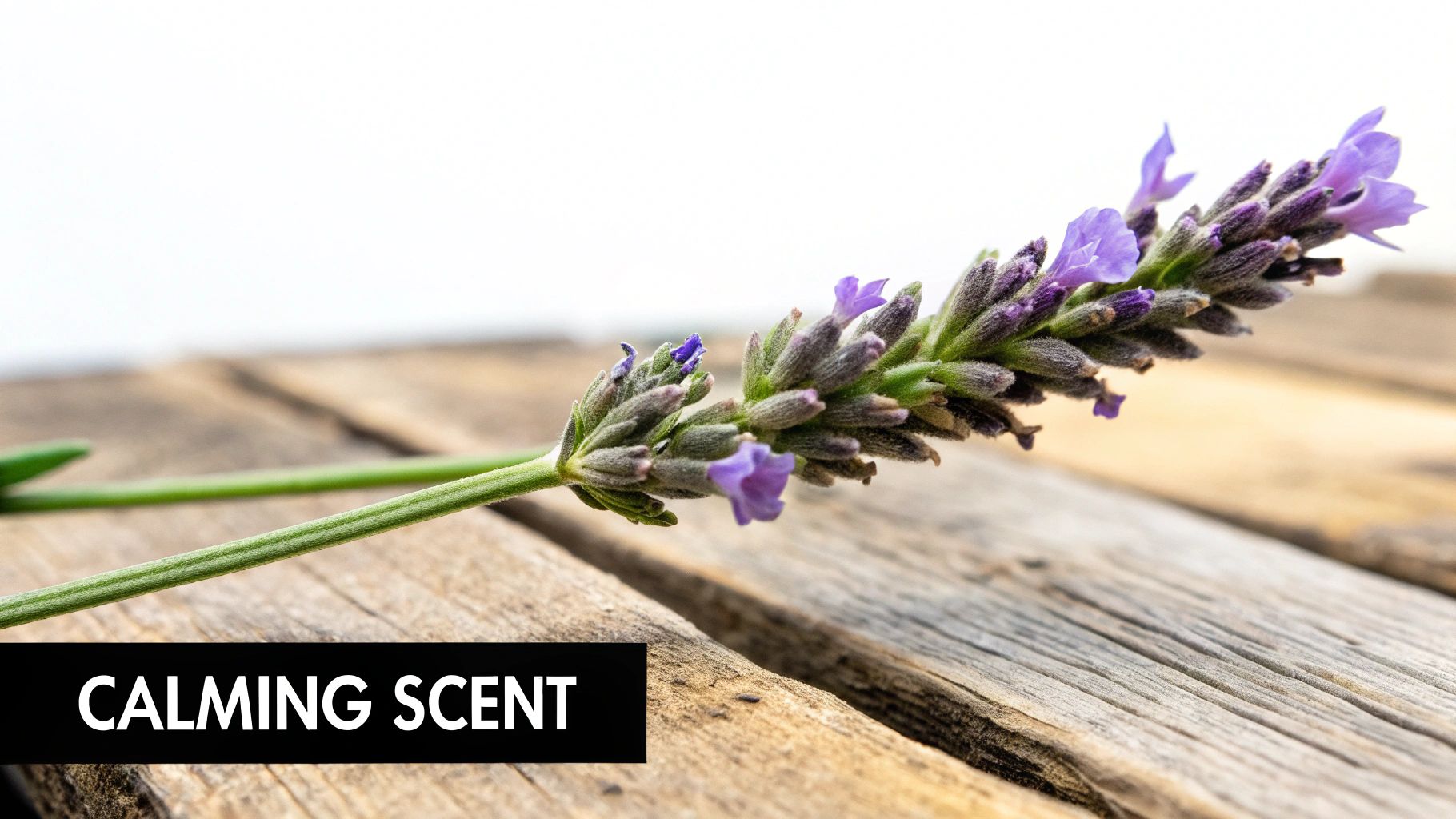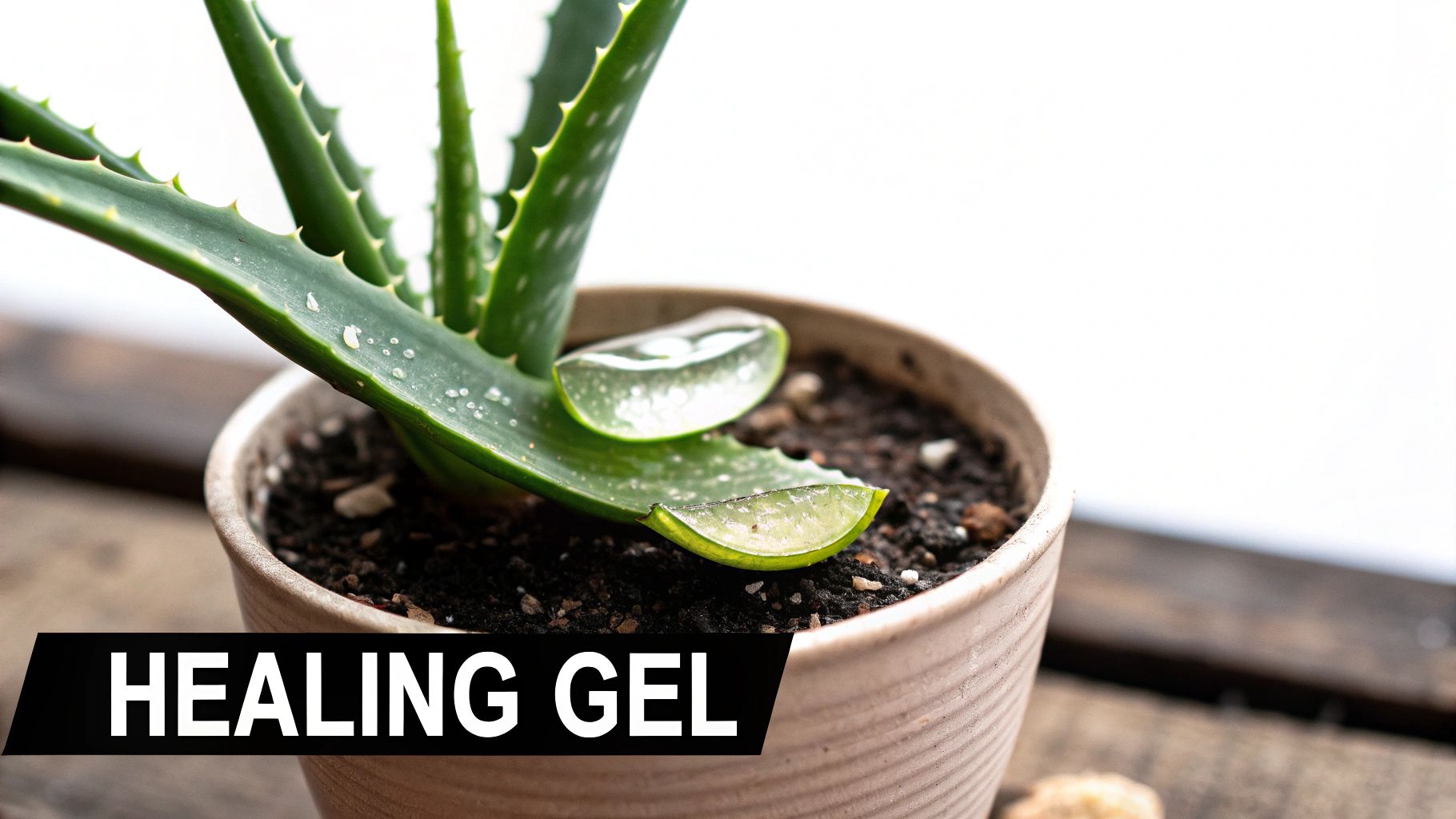
7 Essential Medicinal Herbs to Grow at Home in 2025
7 Essential Medicinal Herbs to Grow at Home in 2025
Imagine stepping into your backyard to harvest remedies that can soothe a headache, calm anxiety, or boost your immune system. Growing your own medicinal herbs to grow is not just about gardening; it's about reclaiming a powerful connection to nature and taking an active role in your family's well-being. This guide moves beyond generic advice, offering a curated list of seven potent, easy-to-grow plants that form the foundation of a home apothecary.
We'll explore specific growing techniques, optimal harvesting times, and practical preparation methods for each herb, empowering you with the knowledge to transform a corner of your garden into a source of health and vitality. To support your home apothecary, embracing eco-friendly gardening principles ensures your herbs are grown sustainably and naturally, maximizing their potency and purity.
This article provides the actionable steps you need to get started. We will cover everything from planting Echinacea to boost immunity to harvesting Lavender for its calming properties. Whether you're a seasoned homesteader or a beginner with a sunny windowsill, this is your starting point for cultivating wellness from the ground up, one plant at a time.
1. Echinacea (Purple Coneflower)
A staple in any garden focused on medicinal herbs to grow, Echinacea, or Purple Coneflower, is as beautiful as it is beneficial. This North American native perennial is celebrated for its striking, daisy-like purple flowers and, more importantly, its powerful immune-boosting properties. Historically used by Great Plains Native American tribes for everything from wound healing to snake bites, its reputation as a natural wellness aid is well-deserved.
The plant's roots, leaves, and flowers are rich in active compounds like alkamides, phenolic acids, and polysaccharides. These components work together to support your immune system, potentially reducing the duration and severity of common colds and respiratory infections. Echinacea stands out among many other plants as one of the most potent herbs for immune support, making it an invaluable addition to your home apothecary.
Growing and Harvesting Echinacea
Echinacea is remarkably easy to cultivate, making it perfect for beginner gardeners. It thrives in conditions that mimic its native prairie habitat.
Planting: For best results, plant in a location that receives at least six hours of full sun daily. It prefers well-draining soil and is quite drought-tolerant once established. Space your plants 18-24 inches apart to ensure good air circulation and prevent overcrowding.
Harvesting: You can harvest the flowers and leaves throughout the summer. For the most potent part of the plant, the roots, wait until the fall after the plant has matured for at least three years. This allows the root system to develop fully.
Preservation: To preserve the medicinal compounds, dry the flowers and leaves immediately after harvesting in a dark, well-ventilated area. The roots should be washed, chopped, and then dried thoroughly before storage.
For a quick reference, this summary highlights the essential details for growing and using Echinacea.

This visual guide confirms that with the right sun exposure and climate, you can easily cultivate this powerful immune-supporting herb. By understanding its key compounds and benefits, you can effectively incorporate Echinacea into your wellness routine.
2. Lavender
More than just a beautiful addition to any landscape, Lavender is a versatile and aromatic evergreen shrub prized for its profound calming and antiseptic properties. This Mediterranean native belongs to the mint family and has been used since ancient Roman times for bathing and relaxation. Its fragrant flowers are rich in essential oils containing linalool and linalyl acetate, powerful compounds that promote relaxation, ease anxiety, and offer antimicrobial benefits for minor skin irritations.
Lavender's gentle yet effective nature makes it one of the most beloved medicinal herbs to grow at home. The plant’s calming scent is a cornerstone of modern aromatherapy, used to improve sleep quality and reduce stress. Additionally, its antiseptic qualities make it a valuable ingredient in homemade salves and lotions for soothing minor cuts, burns, and insect bites. Its widespread use, from the large-scale fields of Provence, France, to the essential oil production of companies like Young Living, highlights its enduring therapeutic appeal.

Growing and Harvesting Lavender
Lavender is surprisingly hardy and thrives with a bit of attention to its specific needs, rewarding you with fragrant blooms for years. Proper planning is key to success.
Planting: Lavender demands full sun (at least six to eight hours daily) and exceptionally well-draining soil. If you have heavy clay soil, consider planting in raised beds or amending the soil with sand or gravel to prevent root rot. Space plants 2-3 feet apart to allow for mature growth and adequate airflow.
Harvesting: For the most potent fragrance and oil content, harvest the flower spikes just as the buds have formed but before they fully open. Cut the stems in the morning after the dew has dried.
Preservation: Gather the harvested stems into small bundles and hang them upside down in a dark, cool, and well-ventilated area for two to four weeks. Once completely dry, you can strip the buds from the stems for use in sachets, teas, or infusions.
Proper site selection is crucial, and thoughtful preparation can make all the difference. For more insights on setting up your garden for success, you can learn more about garden planning for beginners. By understanding its unique requirements, you can easily cultivate this aromatic herb and incorporate its calming benefits into your daily life.
3. Aloe Vera
A fixture on sunny windowsills worldwide, Aloe Vera is much more than a simple decorative succulent. This plant is a living first-aid kit, making it one of the most practical medicinal herbs to grow at home. Its thick, fleshy leaves are filled with a clear gel containing over 75 active compounds, including vitamins, minerals, amino acids, and powerful antioxidants. Its use dates back to ancient Egypt, where it was revered as the “plant of immortality” and used for its profound healing capabilities.

The gel's remarkable soothing and anti-inflammatory properties make it a go-to remedy for treating minor burns, cuts, and skin irritations. It creates a protective layer over wounds, speeding up the healing process and reducing the risk of infection. Internally, properly prepared aloe can support digestive health. The widespread use of aloe in hospital burn units and by large-scale cosmetic companies like Forever Living Products is a testament to its scientifically-backed benefits, solidifying its place as an essential plant for any wellness-focused garden.
Growing and Harvesting Aloe Vera
Aloe Vera is a low-maintenance succulent, ideal for even the most novice gardener. It thrives indoors with minimal care, providing a constant supply of its healing gel.
Planting: For indoor growing, use a terracotta pot with excellent drainage holes to prevent root rot. Plant in a cactus or succulent potting mix. Place it in a location that receives plenty of bright, indirect sunlight, as direct sun can scorch its leaves.
Harvesting: Wait until the plant is mature, with large, thick outer leaves. Harvest by cutting a single outer leaf close to the base of the plant. This allows the plant to continue growing from its center.
Preservation: The gel is most potent when used fresh. Slice the leaf open and scoop out the clear gel immediately after harvesting. For storage, the gel can be blended and frozen in ice cube trays for easy, single-use portions to treat sunburns or skin irritations.
By following these simple steps, you can easily maintain a healthy Aloe Vera plant. Its accessibility and immediate usefulness make it an indispensable part of a home-grown herbal collection.
4. Chamomile
A cherished addition to any list of medicinal herbs to grow, Chamomile is a gentle yet potent plant known for its delicate, daisy-like flowers. This annual herb has a sweet, apple-like aroma and has been used for centuries in traditional herbalism across Europe and beyond. Its reputation as a soothing remedy, famously given to Peter Rabbit by his mother, is supported by its powerful calming properties.
The small white flowers of the chamomile plant are rich in active compounds, including apigenin and bisabolol, which contribute to its anti-inflammatory and sedative effects. These components make it one of the world's most popular herbal teas for promoting relaxation, easing digestive discomfort, and supporting restful sleep. Its versatility and gentle nature make it a foundational herb for a home apothecary, perfect for both children and adults.
Growing and Harvesting Chamomile
Chamomile is a relatively low-maintenance herb that readily self-seeds, often returning to your garden year after year. It prefers a sunny spot but can tolerate some light shade.
Planting: For the best results, sow seeds directly into your garden in the early spring, as soon as the soil can be worked. It thrives in full sun but will appreciate some afternoon shade in hotter climates. It is not picky about soil, but well-draining soil is ideal.
Harvesting: The key to a continuous supply is regular harvesting. Pick the flowers in the morning after the dew has evaporated, when the oils are most concentrated. Snip the flower heads every few days to encourage the plant to produce more blooms throughout the season.
Preservation: To preserve your harvest, lay the flowers in a single layer on screens in a dark, dry, and well-ventilated area until they are completely crisp. Store the dried flowers in an airtight container away from direct light and heat to maintain their potency and flavor.
5. Calendula (Pot Marigold)
A radiant addition to any garden focused on medicinal herbs to grow, Calendula, often called Pot Marigold, is a cheerful annual flower prized for its brilliant golden-orange petals and remarkable skin-healing abilities. This versatile herb has been a cornerstone of traditional European herbal medicine for centuries, famously utilized by figures like the medieval herbalist Hildegard of Bingen for its soothing and restorative properties. Its bright blooms are a welcome sight, but its true power lies within its petals.
The vibrant petals are packed with beneficial compounds like flavonoids, triterpenes, and carotenoids. These components work in synergy to deliver potent anti-inflammatory, antimicrobial, and tissue-regenerating effects. This makes Calendula a premier choice for natural first aid, ideal for creating salves, oils, and creams to treat minor cuts, burns, rashes, and insect bites. Its gentle nature is so trusted that it is a key ingredient in many natural baby care products, such as those from Weleda.
Growing and Harvesting Calendula
Calendula is wonderfully unfussy and one of the easiest medicinal flowers to cultivate, rewarding even novice gardeners with a season-long profusion of blooms.
Planting: For the best results, direct sow seeds in early spring in a spot that receives at least six hours of full sun. It is not particular about soil but prefers it to be well-draining. Succession planting every two to three weeks will ensure you have a continuous supply of fresh flowers throughout the growing season.
Harvesting: The best time to harvest the flower heads is mid-morning after the dew has evaporated but before the intense midday sun. This is when their resinous, medicinal compounds are at their peak. Gently pluck the entire flower head from the stem.
Preservation: Use the fresh petals immediately for oil infusions or dry the flower heads in a single layer in a dark, airy location. To maintain vibrant color and potency, ensure they are completely dry before storing them in an airtight glass jar away from direct sunlight.
6. Peppermint
A refreshingly aromatic and vigorous herb, Peppermint is a must-have in a garden of medicinal herbs to grow. This natural hybrid of watermint and spearmint is instantly recognizable by its cool, invigorating scent. Valued since the times of ancient Egyptian and Greek physicians, its medicinal applications have been validated by modern research, particularly for digestive health, making it a powerful and pleasant addition to any home garden.
The magic of peppermint lies in its high concentration of active compounds, primarily menthol and menthone. These components give the herb its characteristic cooling sensation and powerful antispasmodic properties. This makes peppermint exceptionally effective for soothing digestive ailments like indigestion, bloating, and symptoms of Irritable Bowel Syndrome (IBS). It is also widely used to alleviate tension headaches and clear respiratory congestion.
Growing and Harvesting Peppermint
Peppermint is famously easy to grow, but its aggressive spreading habit requires some management to keep it from taking over your garden.
Planting: Peppermint thrives in rich, moist soil and prefers partial shade, especially in hotter climates. To control its spread, it is highly recommended to plant it in containers or use a root barrier that goes at least 12 inches deep if planting directly in the ground.
Harvesting: Harvest the leaves just before the plant begins to flower, as this is when the essential oil content is at its peak. Snip stems in the morning after the dew has dried for the best flavor and potency. For a continuous supply, you can harvest leaves throughout the growing season. For more in-depth harvesting techniques, you can explore detailed guides on how to properly harvest herbs for maximum benefit.
Preservation: Dry the leaves quickly in a dark, well-ventilated space to preserve the volatile menthol. Once completely dry and crumbly, store them in an airtight container away from light and heat to maintain their medicinal qualities for teas, tinctures, or culinary uses.
7. Lemon Balm
A delightful and fragrant addition to any list of medicinal herbs to grow, Lemon Balm (Melissa officinalis) is a gentle yet powerful member of the mint family. Its lush green leaves release a bright, uplifting lemon scent when crushed, hinting at its remarkable calming and mood-lifting properties. This easy-growing perennial has been cultivated for centuries, from traditional monastery gardens in Europe to modern apothecaries, valued for its ability to soothe the nerves and support the spirit.
The herb's therapeutic effects are attributed to its rich concentration of volatile compounds, including citronellal, geranial, and most notably, rosmarinic acid. These components contribute to its well-documented benefits for reducing anxiety, promoting restful sleep, and providing antiviral support, particularly against the herpes simplex virus responsible for cold sores. Its gentle nature makes it suitable for a wide range of uses, from a calming evening tea to a topical skin soother.
Growing and Harvesting Lemon Balm
Like its mint relatives, Lemon Balm is notoriously easy to cultivate, making it an excellent choice for beginner gardeners. It can, however, spread vigorously if not managed.
Planting: Lemon Balm is not overly particular but thrives in partial shade to full sun with moist, well-draining soil. To control its spreading habit, consider planting it in a container or a garden bed with physical barriers. You can get a head start by reviewing some expert tips on how to start seeds indoors.
Harvesting: Harvest leaves throughout the growing season, preferably in the morning after the dew has dried. The best flavor and medicinal potency are found in the leaves harvested just before the plant begins to flower. Snip stems regularly to encourage bushier growth.
Preservation: Lemon Balm is best used fresh, as it loses some of its signature scent and potency when dried. For year-round use, chop fresh leaves and freeze them in ice cube trays with a little water. These can be added directly to teas or recipes. You can also dry the leaves in a dark, airy location for herbal tea blends.
Medicinal Herbs Growing Comparison Table

From Seed to Salve: Your Next Steps in Herbalism
You've just explored a curated collection of nature's most accessible and effective remedies. From the immune-boosting power of Echinacea to the gentle, sleep-inducing properties of Chamomile, these seven plants offer a direct path to greater wellness and self-sufficiency. Cultivating medicinal herbs to grow is more than just gardening; it's an act of empowerment, connecting you directly to the source of your own health and well-being.
The journey from a curious beginner to a confident herbalist begins with a single seed. We've demystified the process, providing actionable steps for planting, nurturing, and harvesting potent herbs like Calendula for skin-soothing salves and Peppermint for digestive support. Remember, the true magic lies in the hands-on experience of watching these plants thrive under your care.
Key Takeaways for Your Herbal Journey
Start Small and Specific: You don't need a massive plot to begin. Choose one or two herbs from this list that address a specific need for you or your family, such as growing Lavender for stress relief or Aloe Vera for minor burns. Mastering a few plants builds a strong foundation.
Observation is Your Best Tool: Pay close attention to your plants. Notice how they respond to sunlight, water, and soil conditions. This intimate knowledge is what separates a good gardener from a great one and ensures your harvests are potent and healthy.
Integration is the Goal: The ultimate value of these herbs is unlocked when you integrate them into your daily life. Brew a fresh cup of Lemon Balm tea after a long day, or create a simple Peppermint-infused oil for tension headaches. These small, consistent actions create a profound impact over time.
Putting Knowledge into Action: Your Next Steps
Your path forward is clear. Begin by selecting the herb that most resonates with you and dedicate a small space, whether a container on your patio or a corner of your garden bed, to its cultivation. Use the guidance provided in this article to acquire your seeds or starter plant and prepare the soil. Document your progress in a journal, noting when you planted, when you first see sprouts, and how the plant grows.
This hands-on practice transforms abstract knowledge into tangible skill. The experience of harvesting your very first handful of Chamomile flowers or snipping fresh Lavender stems is where the true connection is forged. This is the essence of building a resilient, plant-based apothecary, one that serves you season after season. By embracing the process, you are not just growing plants; you are cultivating a deeper relationship with nature and a more profound understanding of your own health.
Ready to take your homesteading skills to the next level? At The Grounded Homestead, we provide in-depth guides, workshops, and resources to help you master everything from advanced herbalism to sustainable gardening. Join our community and discover how to build a more self-sufficient and fulfilling life, starting right in your own backyard. Visit The Grounded Homestead to learn more.


Facebook
Instagram
X
Youtube